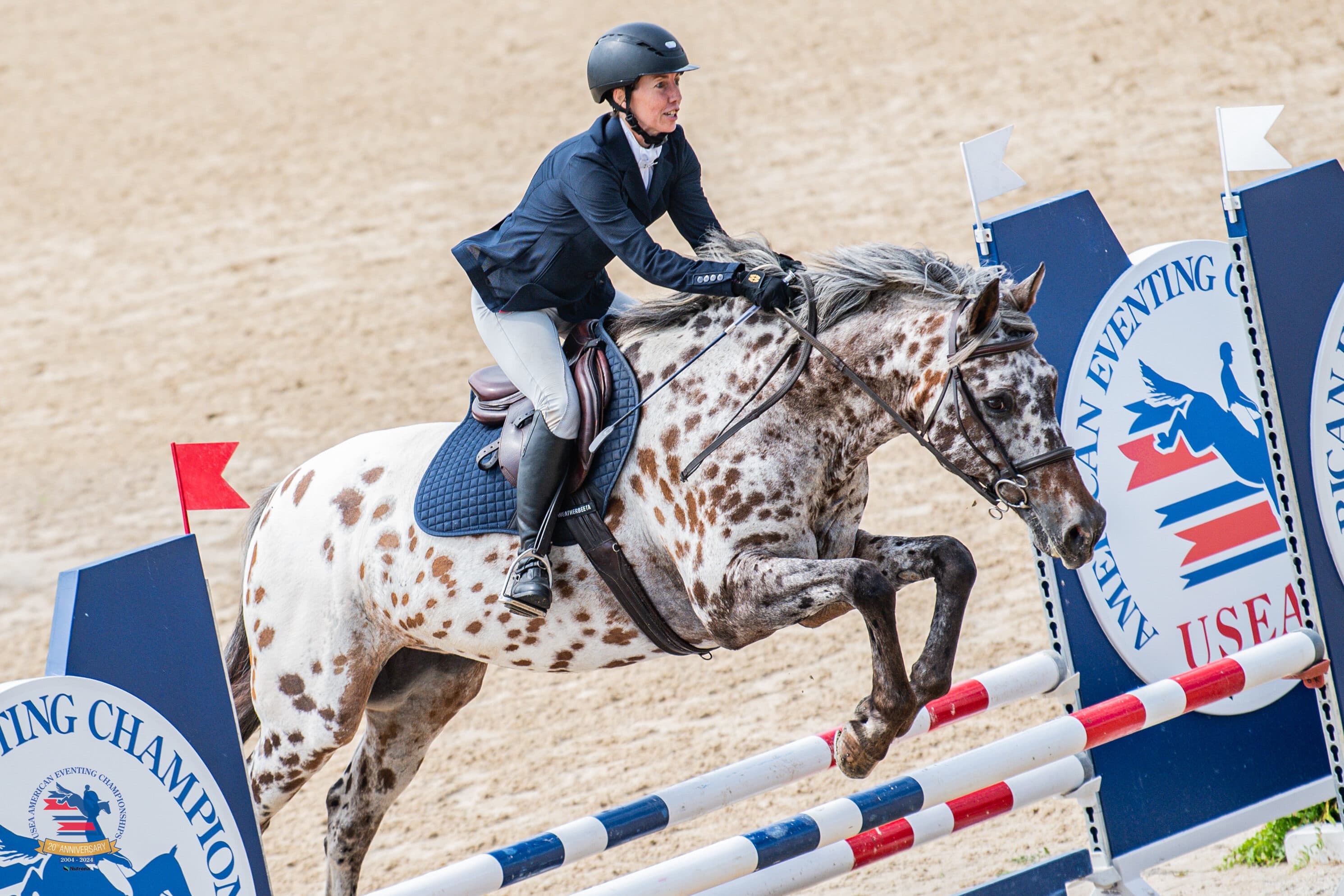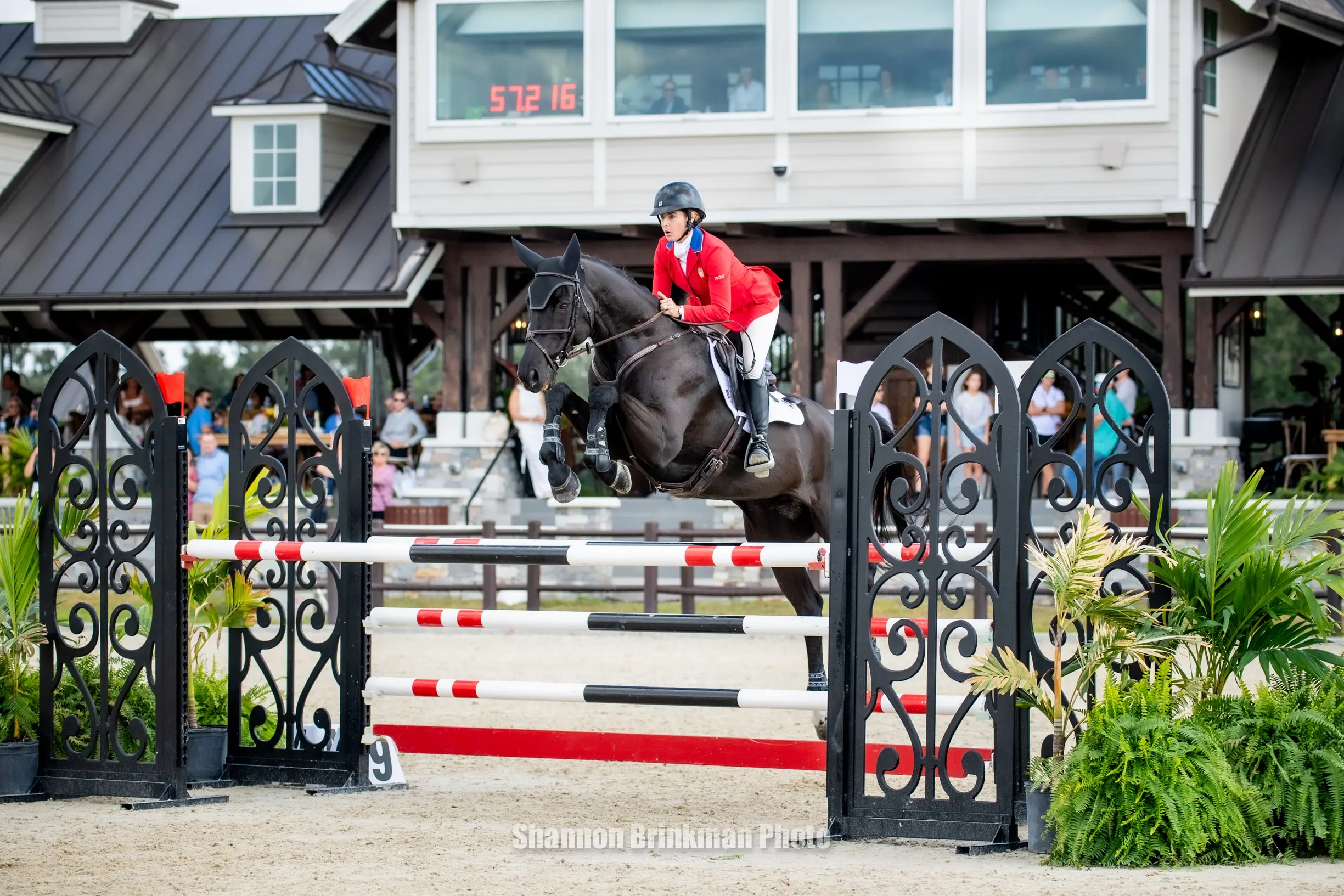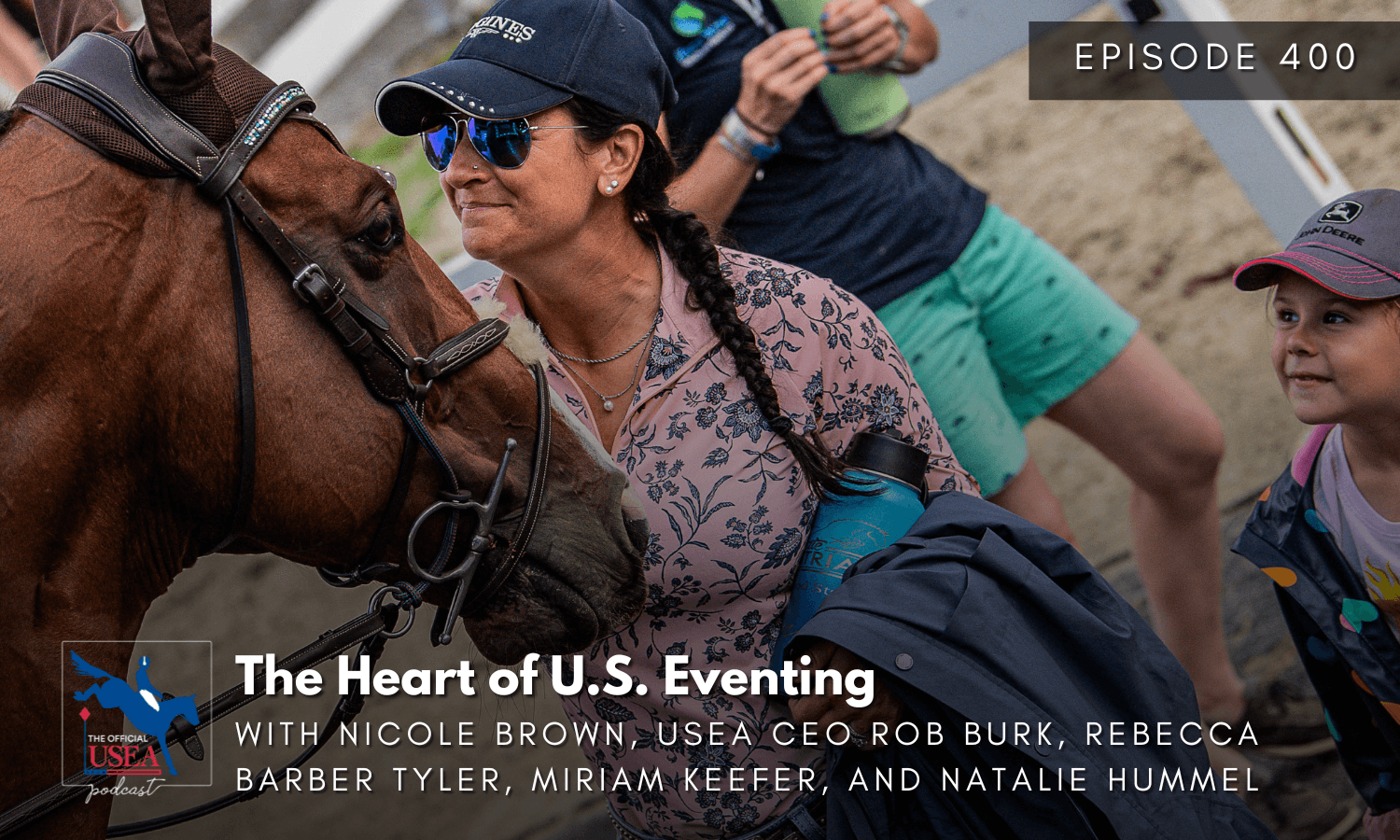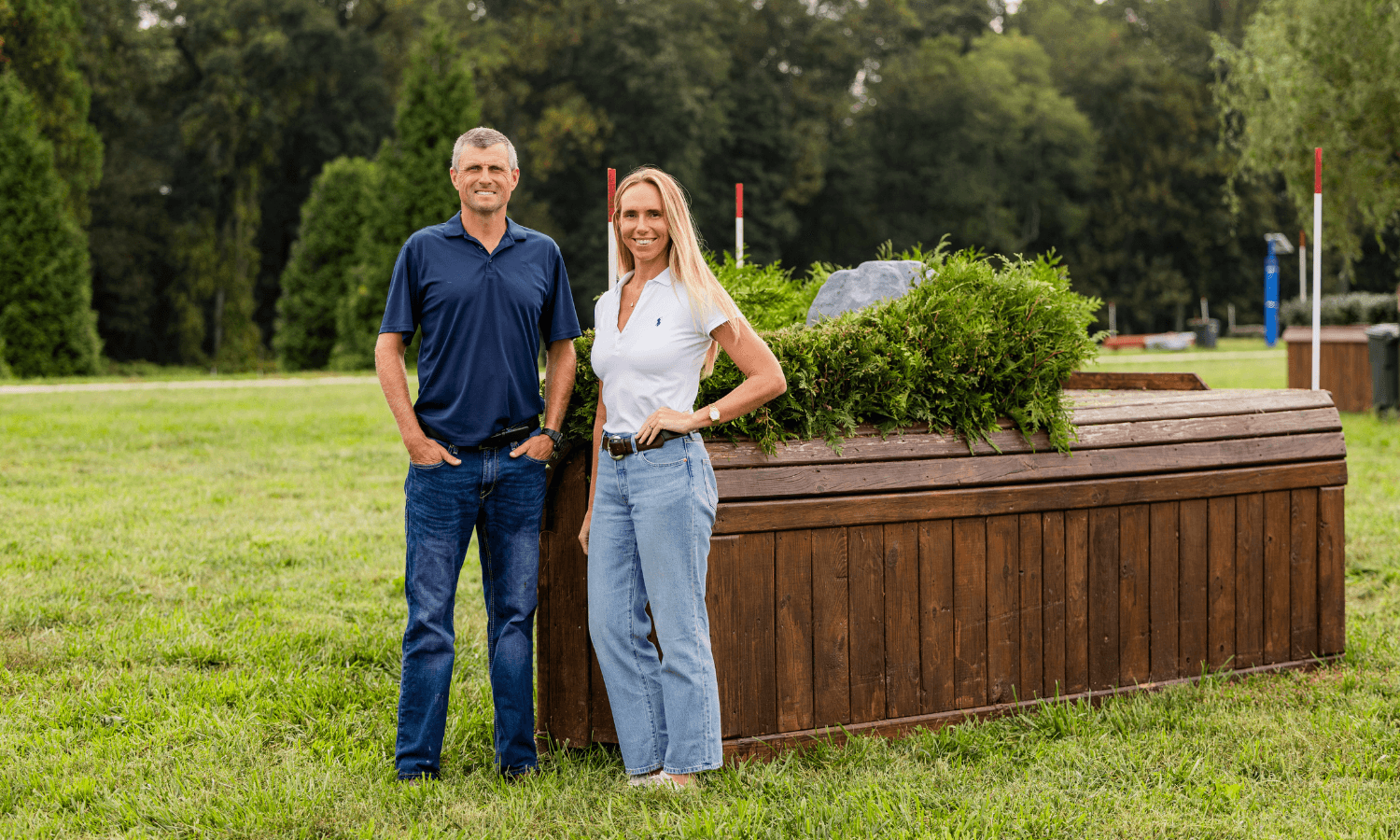Scheduling Superheroes: The Team that Makes your Ride Times a Reality at the USEA AEC

With the USEA American Eventing Championship presented by Nutrena Feeds gaining in popularity and prestige every year, it came as no surprise to Event Secretary, Cavan Allen, and Head of Scheduling, Debbie Hinkle, that attempting to accommodate over 1,000 entries for this year’s event would take a herculean effort.
While there may only be so many hours in a day or dressage rings available at a venue, this dynamic duo attempts to “move the puzzle pieces” as much as possible to ensure as many riders get the opportunity to compete on the hollowed grounds of the Kentucky Horse Park as they can. The USEA sat down with Allen and Hinkle to help our members better understand the scheduling process for a championship of this size and scope.
It truly is a labor of love for Hinkle, who explained in meticulous detail the amount of shifting that goes into the scheduling of this event, and quite frankly, any event that deals with common conflicts such as riders with multiple horses, venue restrictions, trainer conflicts, and more. But Hinkle’s duties don’t end there. To kick off the conversation, she explained how her years of experience and care for the competitors pushes her to go above and beyond.
“We really do try, and I take pride in making the schedule not just functional, but smooth,” said Hinkle. “I check all the juniors to see if I can find a relative who will want to watch and compete themselves, so their times aren't in conflict. We try to make the day shippers not run back and forth to their parking location between horses or phases. I look for those who have longer drives home and make every attempt to get them out as early as we can, and if I know of any horses that are head shakers, I’ll try to schedule their times in the early morning.”
As she explained, the scheduling process starts at a macro level, assessing the main considerations for the event at hand. Across how many days will the event run? When are sunrise and sunset in that area? Are their lights available in the arenas to allow for extra time in the evenings? How many dressage rings are available at one time? What is the weather like this time of year? How long does it take to move between phases based on the size of the property? All of these variables contribute to the initial windows of opportunity that the scheduling team will use to slot the entries in each day. Not to mention, the number of officials present, restrictions on their work hours, and necessary breaks for the restroom and meals also come into play as each phase and division is incorporated into the bigger picture.
Safety is always at the forefront of the team’s mind when they are adding names and times to the schedule. Factors such as the likelihood of extreme heat or severe storms in the summer months require extra contingency planning and perhaps longer gaps between starters. The safety and comfort of the horses, riders, officials, volunteers, event staff, and the public have to be weighed to make an ideal plan for all involved.
The most critical limitation is typically daylight. The time for sunrise and sunset each day is immovable, and no matter how good the intent, the secretary simply can’t add more light hours to the day. Even if the competition is only run during daylight hours, this means we are expecting our dedicated officials and selfless volunteers to work from 7:00 a.m. through later than 7:00 p.m. on most competition days.
Using historical data, the team has detailed the expected number of entries per level and division, which helps determine which competition levels are run each day of the event. You may notice that three levels, Intermediate, Preliminary, and Modified complete their dressage tests all together on Tuesday, whereas Novice is the only division that trots down the centerline on Thursday. This is because of the expected entries and popularity of different levels. Therefore, adding one more horse and rider combination in the Intermediate division, for example, would have no impact on the number of entries accepted in the Novice division, since they aren’t sharing the same resources, such as day of the week, officials, and volunteers.
Once these parameters are considered, the secretary begins taking entries strictly in order of payment date. This is why it is so crucial for riders to enter on Opening Day for any event that is expected to have high demand, such as the AEC. The USEA encourages competitors to enter as soon as possible, even if their qualifications are not yet completed, to secure their spot. Qualifications are checked regularly during the entry process, so if you enter early, you can secure your spot and have peace of mind while finishing your requirements before the qualification deadline. If you don’t qualify, your entry will simply be removed after closing and you will be refunded.
Then it is time for the team to tackle rider requests and extenuating circumstances, which in many cases, can create competing interests. On average, roughly 24% of horses entered have a rider that is competing at least one, and up to seven, more horses during the week. There isn’t a way for one rider to be running cross-country on one horse and completing a dressage test on another at the same time, so the team compares each horse’s schedule against the riders’ other mounts to allow plenty of time between horses and phases to get from one to the next.
Unfortunately, sometimes a waitlist is necessary for more popular divisions, which nobody enjoys, competitors or your event staff included. The lower-levels are the backbone of the sport of eventing, which is why they are hosted with fewer levels per day to allow for more competitors at each level. With that said, the daylight limitation is where a waitlist typically comes into play.
For the waitlist, the event is obligated to list the riders’ names against the particular division which their entry was submitted for, which is where the daily limitations take effect. This year, the brand-new Starter division made its debut at the AEC, and it was even more warmly received than anticipated. With Beginner Novice and Starter sharing a daily schedule, the number of entries accepted in all eight divisions of these levels were impacted by daily time restrictions. The team worked tirelessly to juggle as many Beginner Novice and Starter entries into the schedule as they can, which means Sunday’s show jumping finale went on until 9:00 p.m.
In the end, over 500 hours of work are put into the scheduling of an event this size and complexity each year. This doesn’t include the hours Allen spends accepting the entries, processing the waitlist, responding to 300+ emails daily from entrants, and more in the lead-up to the event.
The USEA hopes that this helps provide a clearer picture of the mammoth task that is putting on an event like the AEC.
About the USEA American Eventing Championships (AEC)
The USEA American Eventing Championships (AEC) presented by Nutrena Feeds is the pinnacle of the sport at the national levels. Held annually, the best junior, adult amateur, and professional competitors gather to vie for national championship titles at every level from Starter to Advanced. This ultimate test of horse and rider draws hundreds of combinations from around the country to compete for fabulous prizes, a piece of the substantial prize money, and the chance to be named the National Champion at their respective levels. In fact, the 2021 AEC garnered over 1,000 entries and now stands as the largest eventing competition in North American history. The 2024 USEA American Eventing Championships presented by Nutrena Feeds were held Aug. 27—Sept. 1 at the Kentucky Horse Park in Lexington, Kentucky. Click here to learn more about the USEA American Eventing Championships.
The USEA would like to thank Presenting Sponsor: Nutrena Feeds; Advanced Final Title Sponsor: Adequan; Platinum Level Sponsor: Bates Saddles, Horse & Country; Gold Level Sponsors: ARMA, Parker Equine Insurance, PulseVet, Schneiders Saddlery, Smartpak, Standlee; Silver Level Sponsors: Auburn Labs, Canter Culture Riding Apparel, Kerrits, The Jockey Club, Rood & Riddle; Bronze Level Sponsor: 70 Degrees, Athletux, The Chronicle of the Horse, D.G. Stackhouse & Ellis, Dubarry of Ireland, Equestrian Team Apparel, Grayson-Jockey Club Research Foundation, Kraft Horse Walkers, Majyk Equipe, Retired Racehorses Project, Ride EquiSafe, Santa Cruz Animal Health; Contributing Level Sponsors: Cross Country App, Georgetown – Scott County Tourism, Lexmark, L.V. Harkness, #WeRideTogether; and Prize Level Sponsors: BEMER, Big Ass Fans, Boyd Martin Fan Shop, Ecogold, EquiFit, Equilab, FarmVet, FLAIR Equine Nasal Strips, Horses 4 Your Consideration, I Love My Horse Eventing Boutique, Jack’s Favorites, Jane Heart Jewelry, Kentucky Equine Research, LeMieux, Mare Goods, Neighborly Tack, Outlaw Nutrition, Palmera Polo, Parkmore Supplements, Practical Horseman / Equine Network, Rachel Dory Equine Fine Art, Remond Minerals, Secretariat Center, Shapley’s, Sidelines Magazine, Strides for Equality Equestrians, and VTO Saddlery.














